UCCA and Institute pour la photographie des Hauts-de-France, Lille, present “Slide / Show: Light Images in Chinese Contemporary Art,” an exhibition bringing together artworks and archival materials to propose a new genealogy of the slide and its legacy in the foundational years of Chinese contemporary art.
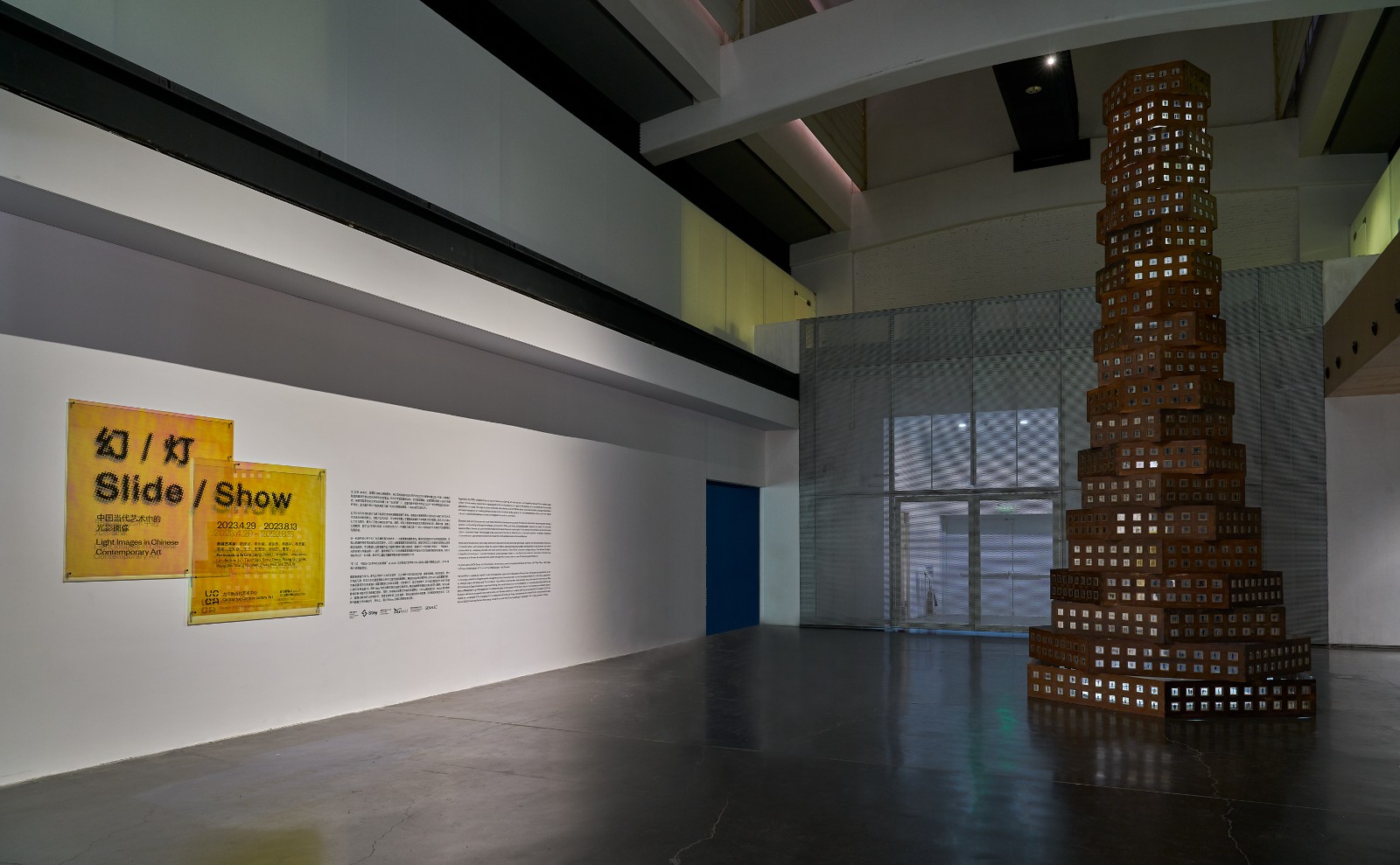
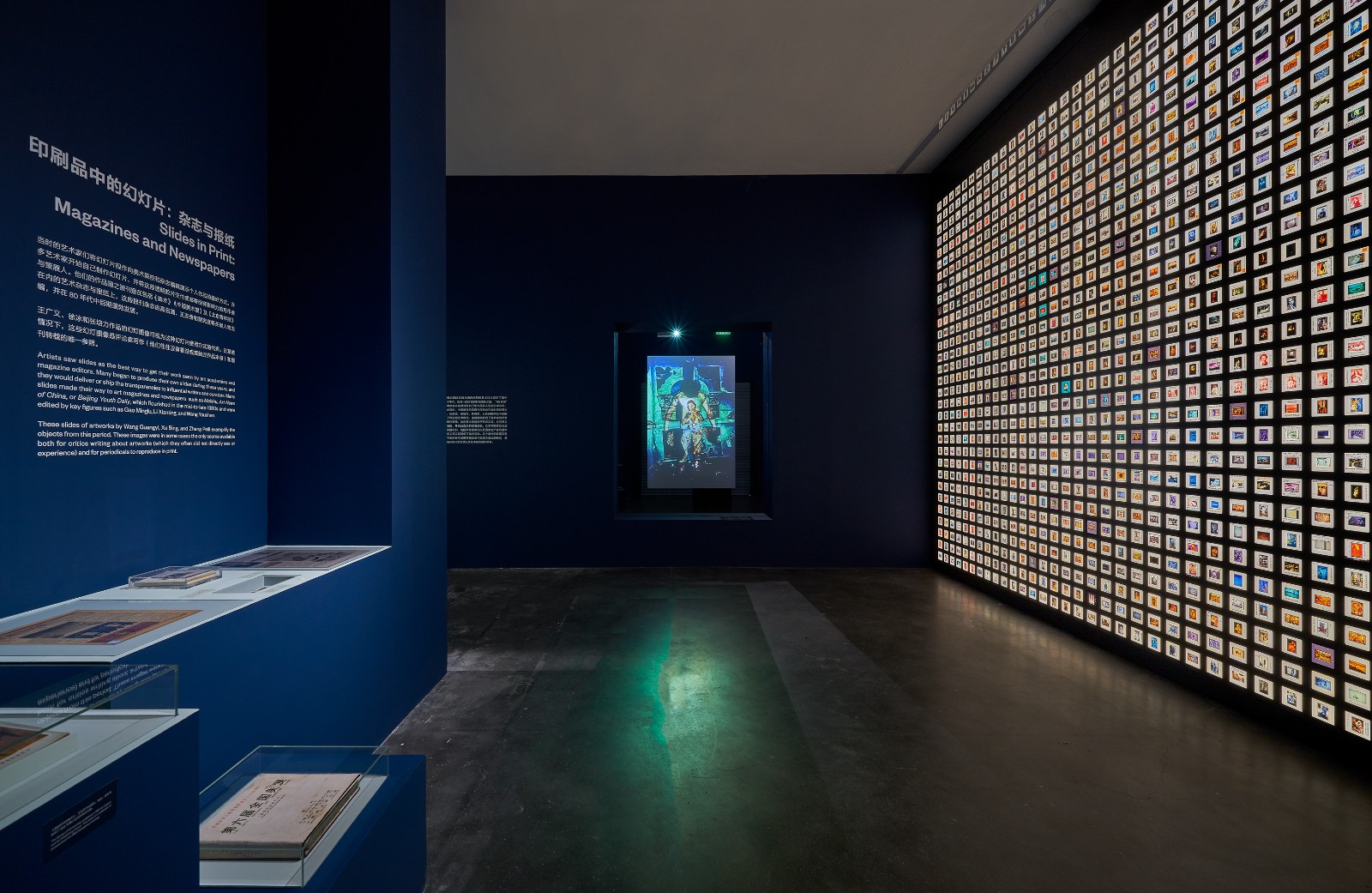
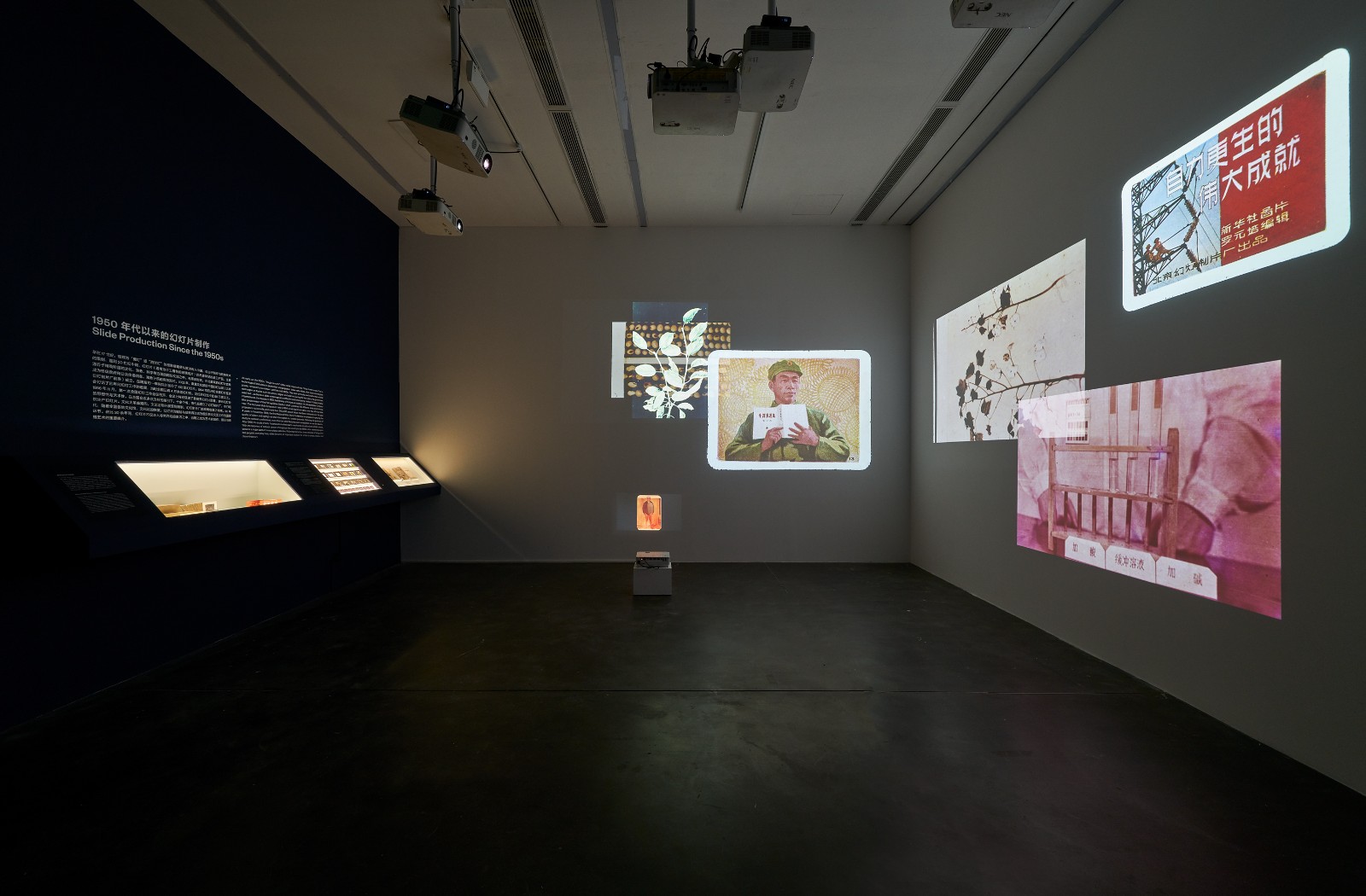
Installation view of ““Slide / Show: Light Images in Chinese Contemporary Art” 2022. Photograph by Sun Shi, courtesy UCCA Center for Contemporary Art.
Beijing, CHINA — From April 29 to August 13, 2023, UCCA presents “Slide / Show: Light Images in Chinese Contemporary Art.” Featuring both artworks and archival materials, the exhibition explores how slides, and their activated state of light images, played an influential role in the emergence of Chinese contemporary art in the 1980s, shaping creative strategies that would form a sometimes underappreciated aspect of artists’ practices for decades to come. Participating artists include Geng Jianyi (1962-2017), Li Yongbin (b. 1963, Beijing), Liang Juhui (1959-2006), Lin Jiahua (b. 1953, Xiamen), Lin Tianmiao (b. 1961, Taiyuan), Song Dong (b, 1966, Beijing), Wang Gongxin (b. 1960, Beijing), Wang Wei (b. 1972, Beijing), Wang Youshen (b. 1964, Beijing), Zhang Peili (b. 1957, Hangzhou), and Zhu Jia (b. 1963, Beijing). Many of the archival materials on display in “Slide / Show” are graciously provided by critic and curator Fei Dawei and artist and educator Zheng Shengtian. The exhibition is organized thematically around concepts linked to key formal characteristics of the slide medium: “Transmission,” “Refraction,” and “Transparency.” These sections explore how slides and slideshows became central to an expanding landscape of international artistic exchange in China; how artists of the ’85 New Wave drew upon screenings and mechanisms of information transmission to create pioneering artworks; and how this artistic legacy of light images may provide an alternative perspective from which to approach later works more commonly viewed through other frameworks. Co-produced by UCCA Center for Contemporary Art and Institut pour la photographie des Hauts-de-France, Lille, “Slide / Show” is curated by UCCA Curator Holly Roussell. Following this presentation in Beijing, the exhibition will travel to Lille in 2025.
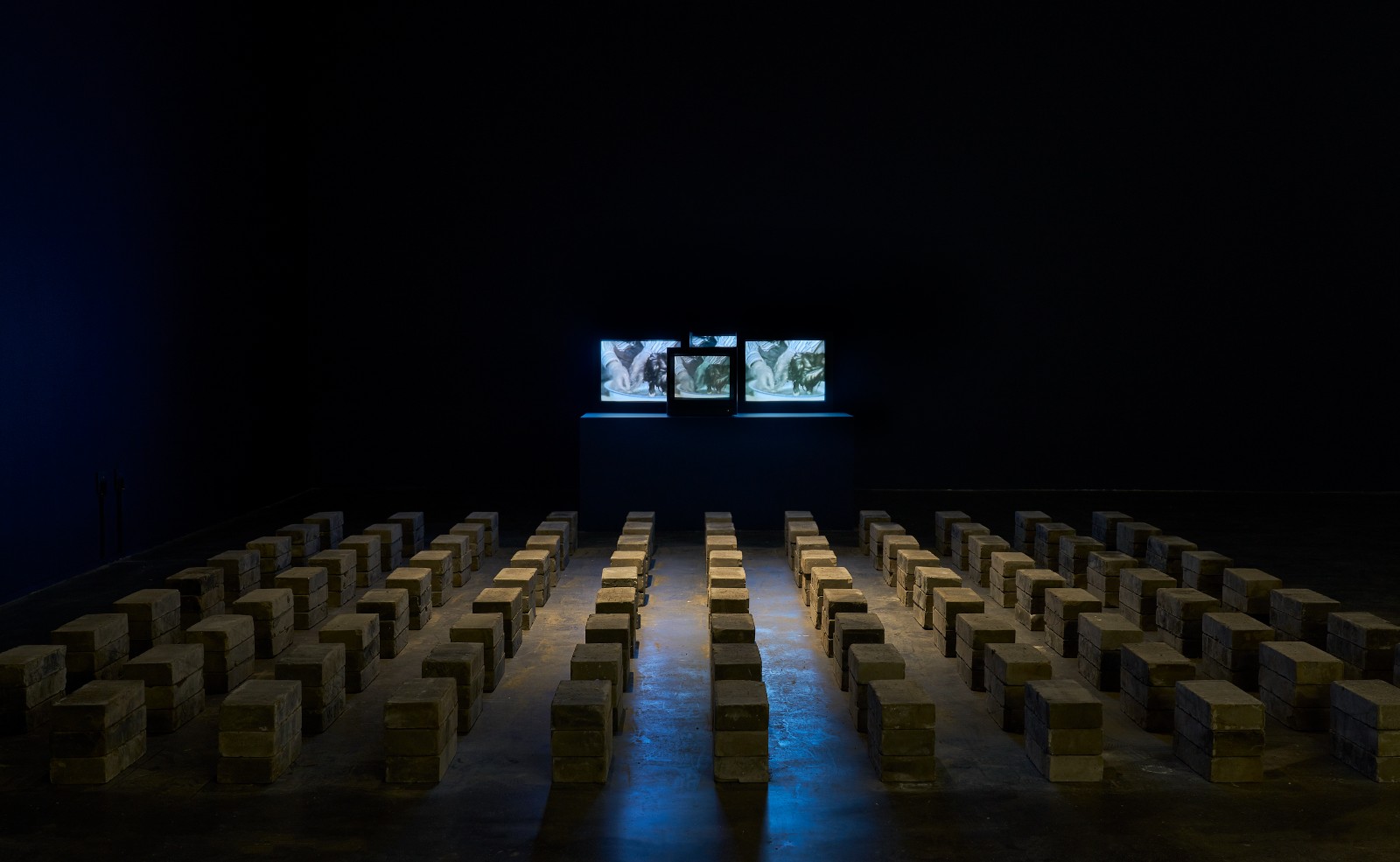

Installation view of ““Slide / Show: Light Images in Chinese Contemporary Art” 2022. Photograph by Sun Shi, courtesy UCCA Center for Contemporary Art.
In the late 1970s and 1980s, students returned to the campuses of previously closed art academies. Just as economic reforms allowed goods and investment to move across China’s borders, new art historical texts and images also began to flow into the country. Slides had been featured in collective public screenings in China since the 1950s, providing precedent for their use as a didactic form. In the 1980s, the increased availability of 35mm color “slide” film made the medium more accessible than before. During this time of few technological alternatives, contemporary artists valued the slide for its ability to project high-quality color reproductions of artworks; slides became a viable way for people to share art, provided they possessed the relative luxury of a camera.

A Great Accomplishment of Regeneration, 1965, offset print color transparency. Courtesy Thomas Sauvin / Beijing Silvermine.
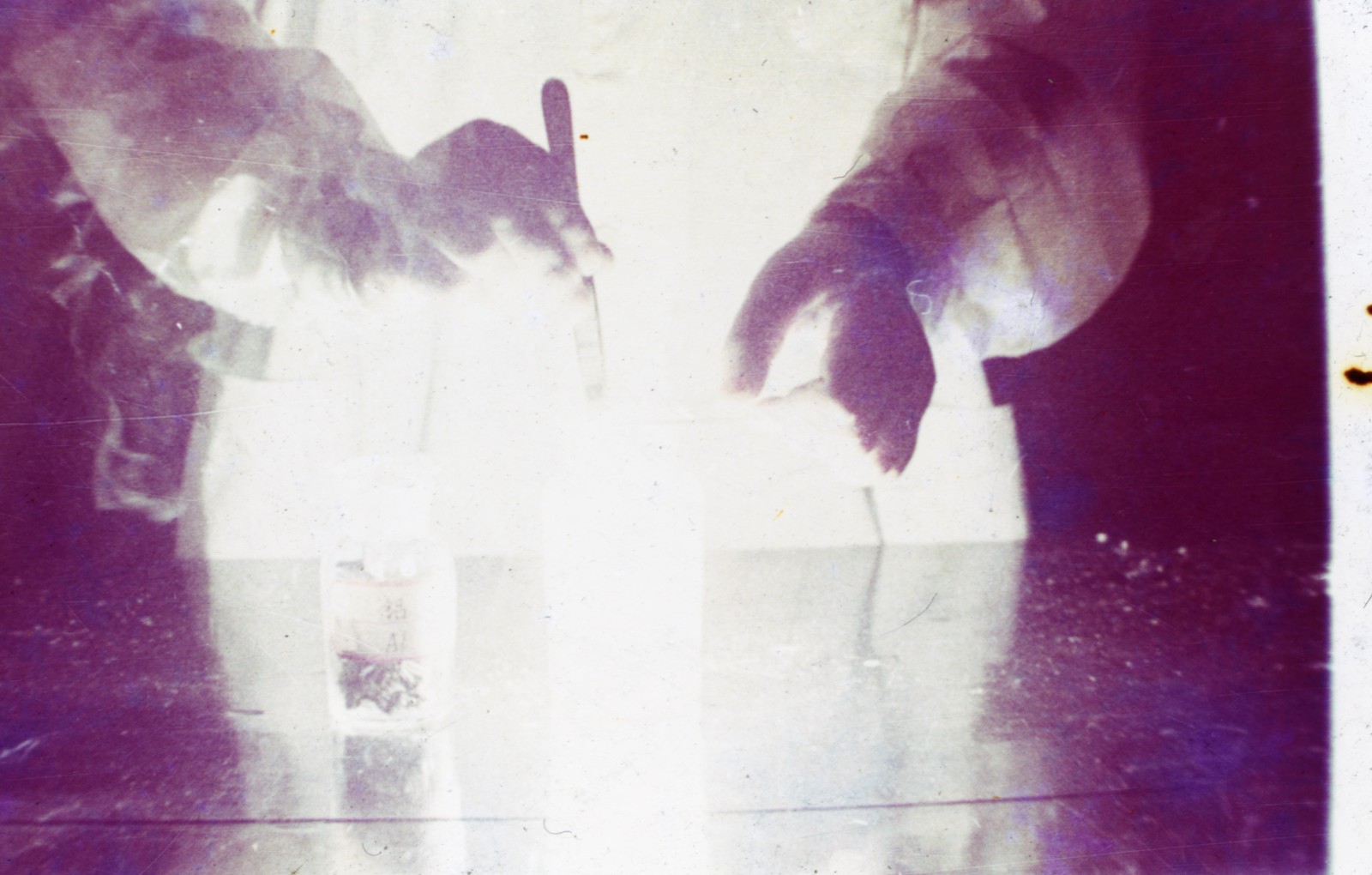
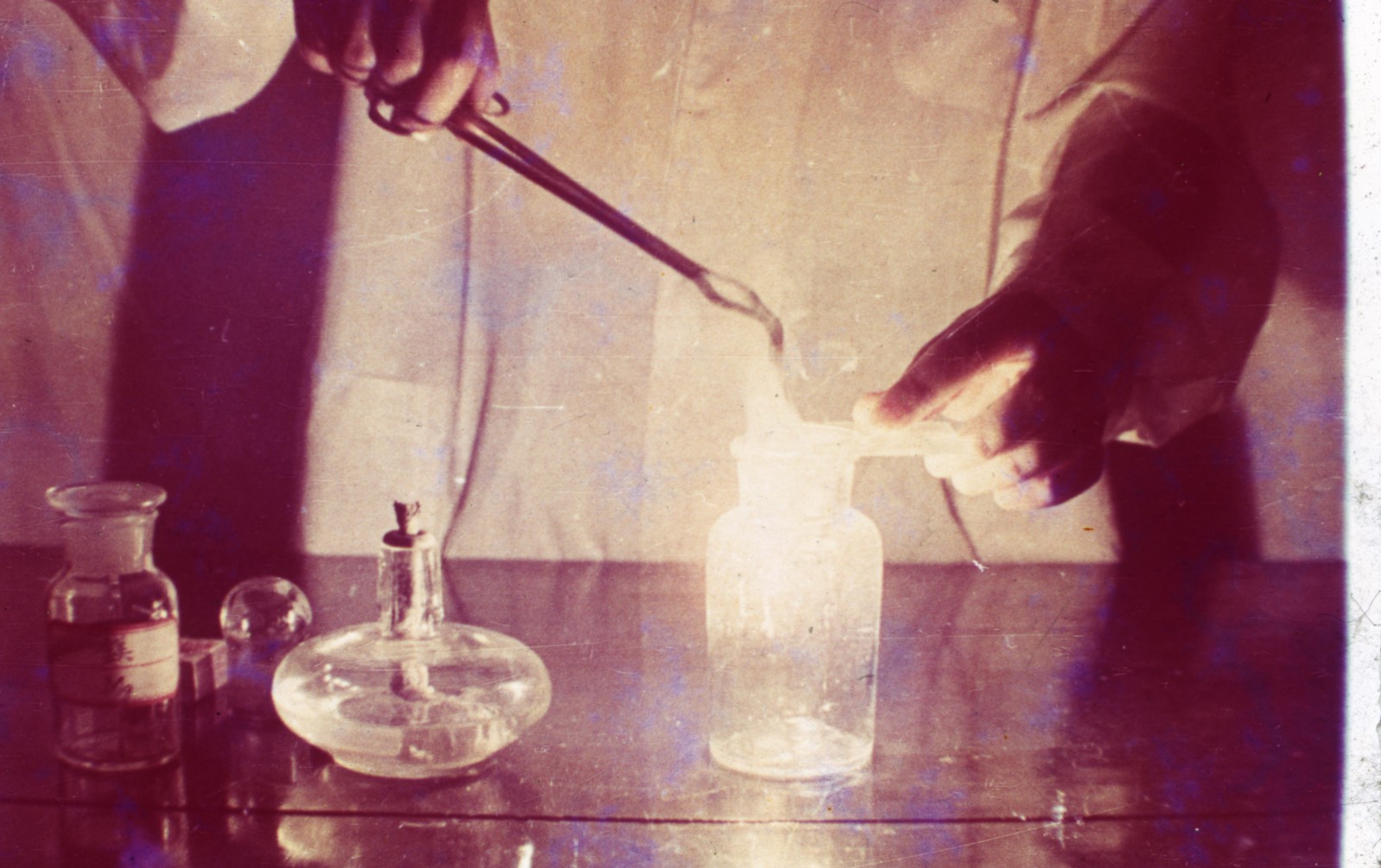
Chemistry education slides, c. 1980-1990s, 35mm slide film. Courtesy Thomas Sauvin / Beijing Silvermine.
The exhibition’s first section is prefaced by City (2003), a monumental installation by Liang Juhui that uses video and backlit glass transparencies to embody both the materiality of the slide as object and its expressive potential. The first section, “Transmission,” presents the context that made projection and slides comparatively accessible in the 1980s, and recounts how the burgeoning contemporary art community utilized the format to spread new ideas. Slides, publications, and ephemera related to the domestic production of projection equipment set the scene for the slide collection of Zheng Shengtian. One of the first art world figures of his generation to travel to the West, Zheng would return from trips abroad throughout the decade with slides of the art he had seen, which ranged from historical masterpieces to new works. Presented here both in a site-specific lightbox installation and as a reconstructed slideshow, these slides grant a glimpse of the content of that spread through Zheng and others’ performance lecture-like presentations. Hungry for information, artists flocked to these screenings, and soon began to produce slides of their own work as a means of distribution. Towards the end of the decade, slideshows shifted from simply being exciting, illuminating events into instruments of power and influence. Materials related to official events such as the Huangshan Conference (1988) illustrate how attempts to organize the anarchic art scene were centered on slideshows. Further afield, selections from Fei Dawei’s archive chronicle his 1986 trip to France, on which he brought with him slides of Chinese contemporary art, completing a cycle of exchange and paving the way for the inclusion of Chinese artists in major international exhibitions.

Zhang Peili, 30 × 30 (video still), 1988, video, color, dual-channel mono sound, monitor, 180'. © Zhang Peili. Courtesy the artist.

35mm color transparency slide of Zhang Peili, Document for Hygiene No. 3, 1991. Courtesy Fei Dawei Archives.
The second section, “Refraction,” presents artworks created within this milieu, illustrating how artists such as Zhang Peili, Lin Jiahua, and Wang Youshen synthesized influences from visual culture introduced via slides and engaged in formal experiments to question how meaning is created, or to confront audiences with their practices of viewing. Lin Jiahua’s 1988 performance Enter into Art History Slideshow Event features the artist with images from Chinese and Western art history projected onto his body. The work serves as a potent metaphor for how a cohort of artists absorbed a massive corpus of art historical knowledge, asserting the status of artist as palimpsest, and perhaps suggesting a hybrid mode of cultural development. Zhang’s two works in this section are among China’s first pieces of “video art,” yet their presence here emphasizes that they are also the artist’s first works engaging with time and tension in the screening context. 30 x 30 (1988), for example, was first screened for attendees at the Huangshan Conference, the intentional banality of a mirror being smashed and rebuilt over 180 minutes subverting the expectations of an insider audience who, despite the artist’s intentions, only watched only a few minutes of the piece before moving on.
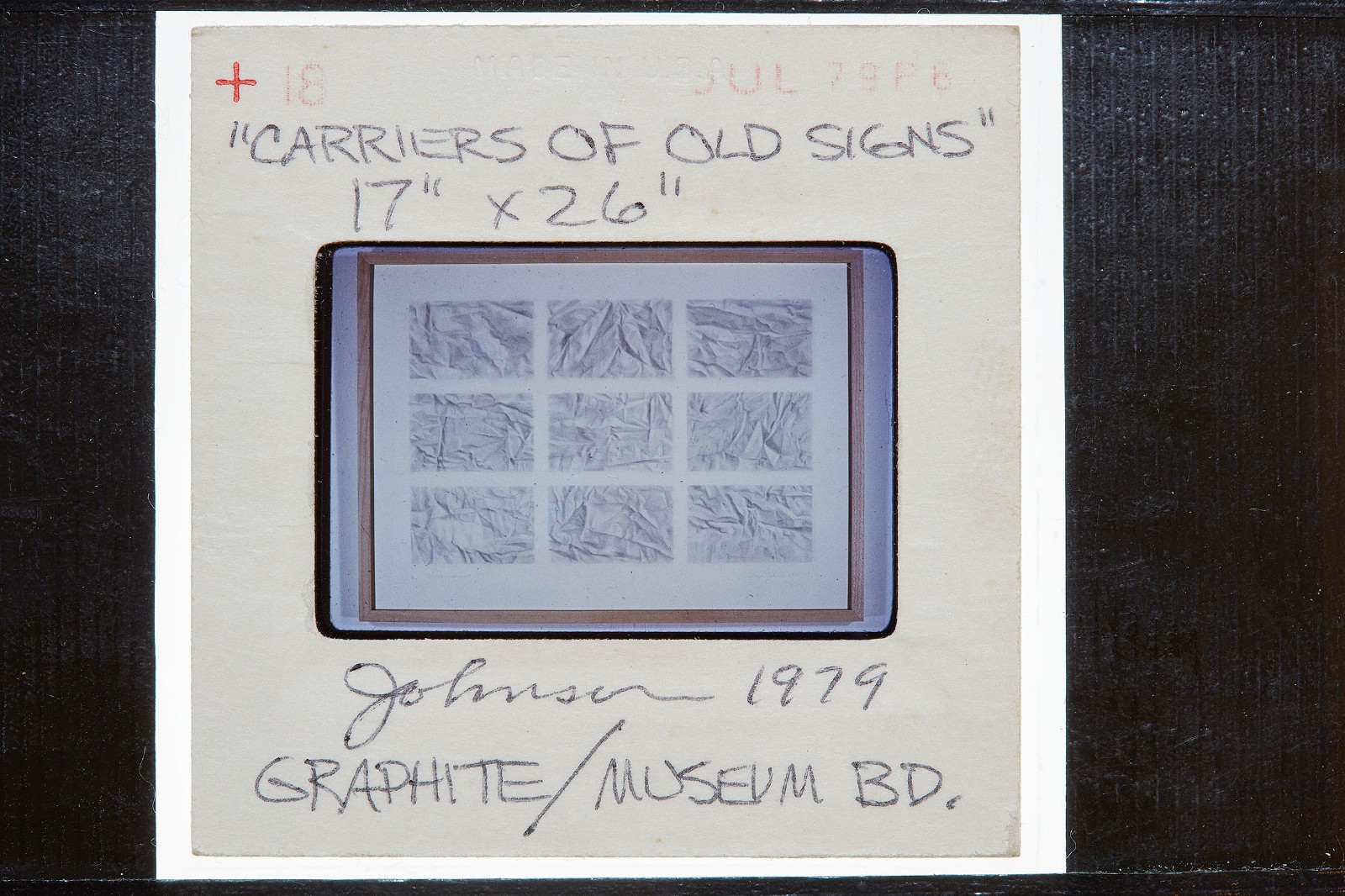
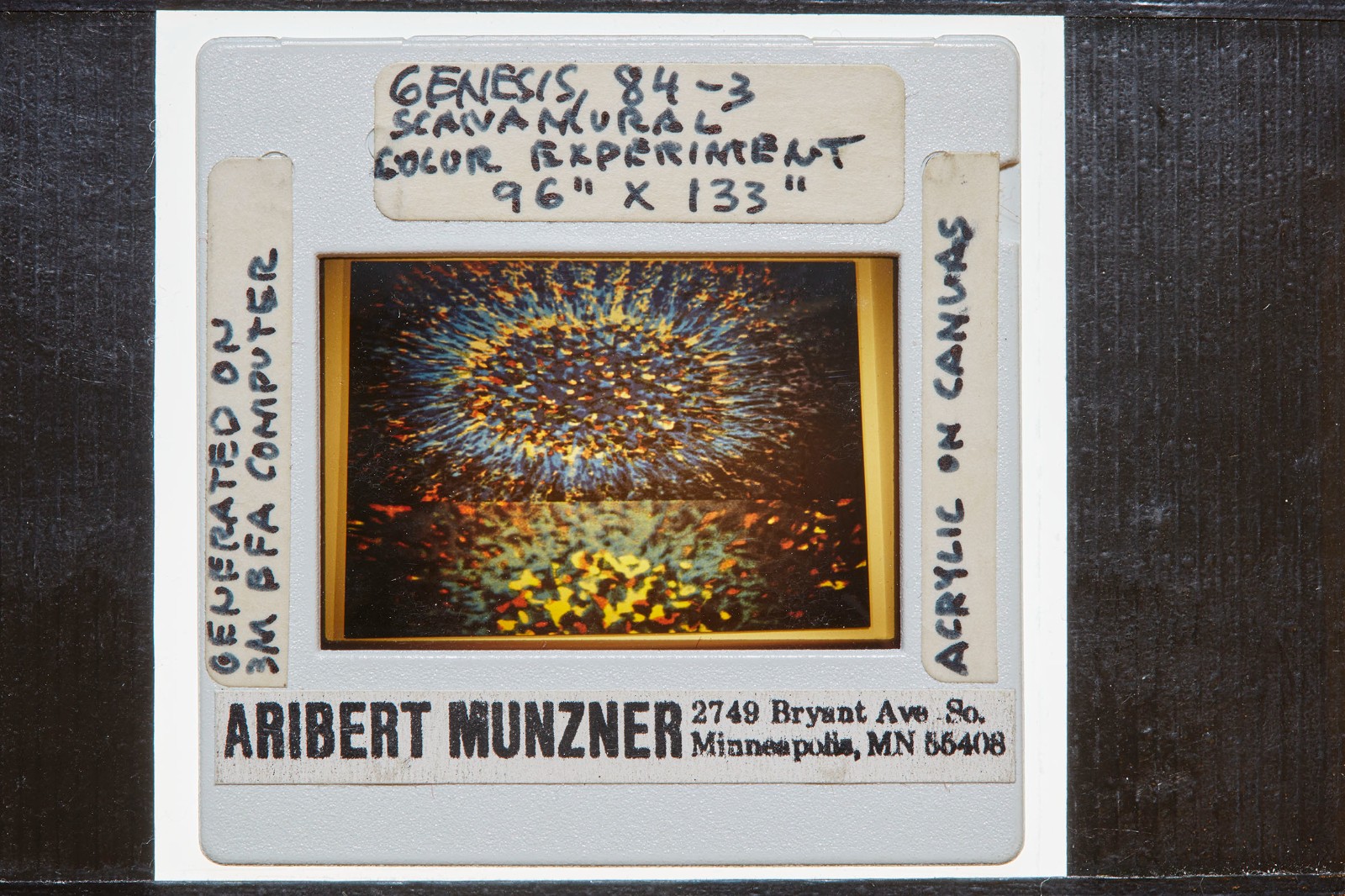
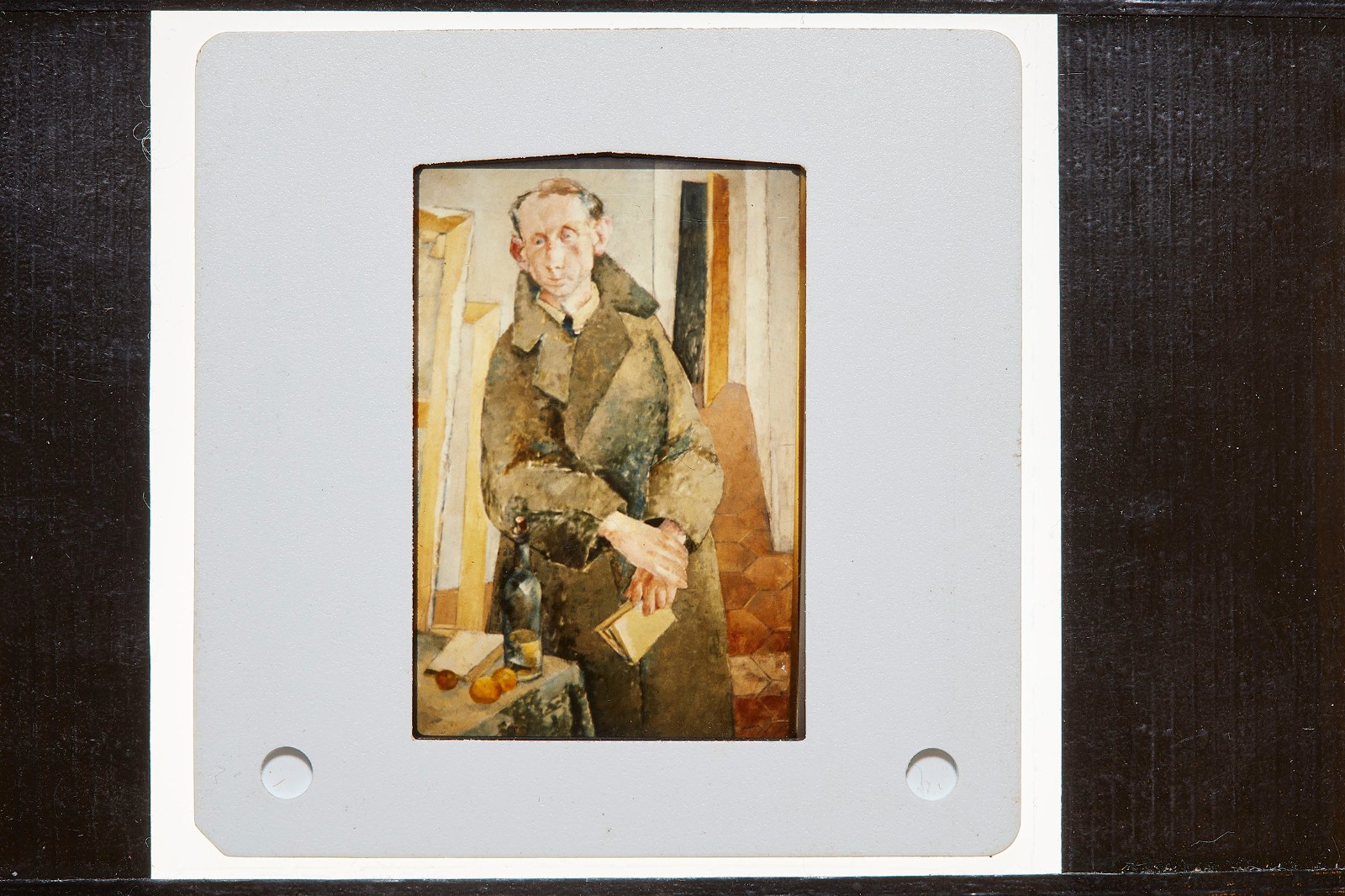
Slides from Zheng Shengtian’s personal collection, c. 1980s. Courtesy Zheng Shengtian.
 Fei Dawei’s office abroad, c. 1990s. Courtesy Fei Dawei Archives. Reprinted in 2023 from a color transparency.
Fei Dawei’s office abroad, c. 1990s. Courtesy Fei Dawei Archives. Reprinted in 2023 from a color transparency.
With the advent of new technology and more affordable consumer electronics, the 1990s saw slides lose importance as a primary medium of transmission. Chinese artists experimented with new media and gradually grew further integrated into international networks. Yet as in the case of Zhang Peili, aspects of the legacy of screenings and projection continued to reverberate through artworks more commonly viewed as video or installation art. The final section, “Transparency,” features work by artists born in the 1950s and early 1960s, such as Li Yongbin, Lin Tianmiao, Liang Juhui, Wang Gongxin, and Zhu Jia, along with pieces by slightly younger artists who came of age in the 1990s, including Song Dong and Wang Wei. Many works experiment with layering transparent images, referencing the relationship between viewer and screen or the intimacy of viewing a projection in a darkened room. In Touching My Father Part 1 (1997) Song Dong uses a projected video of his hand to immaterially “touch” his father, while Lin’s Sewing (1997), one of her earliest thread-winding artworks, presented here in archival form, combines video projection with a sewing machine bound in white thread to examine themes related to family and the ephemerality of manual skills in contemporary society.

Documentary photograph of Lin Jiahua, Enter into Art History Slideshow Event, autumn 1988, performance in Xiamen. Photograph by Wu Yiming, courtesy Lin Jiahua.

Zhu Jia, Related to Environment, 1997, single-channel digital video projection, color, sound, 19'15''. Installation view of “Every Day,” 11th Biennale of Sydney, 1998. © Zhu Jia. Courtesy ShanghART Gallery.
Today, the significance of slides and slideshows within the history of Chinese contemporary art is obscured, and the scarcity of images that led to slides’ proliferation in the 1980s is hard to imagine within the hyper-abundant visual culture of contemporary China. By returning to this medium, which educated and shaped the practices of some of China’s leading experimental artists, “Slide / Show” offers a new perspective on the early years of Chinese contemporary art. Directly and indirectly, slides and projection continue to shape artistic discourses in the country, and the questions that light images first sparked in the minds of artists four decades ago—questions about how we see, learn, and communicate—remain bracingly relevant.

Song Dong, Touching My Father (Part 1), 1997, performance with light projection. © Song Dong. Courtesy the artist and Pace Gallery.
Courtesy of the UCCA Beijing.
About the exhibition
 Slide / Show: Light Images in Chinese Contemporary Art
Slide / Show: Light Images in Chinese Contemporary Art
Exhibition Period: 2023.4.29 – 2023.8.13
Location: Central Gallery and New Gallery, UCCA Beijing




























